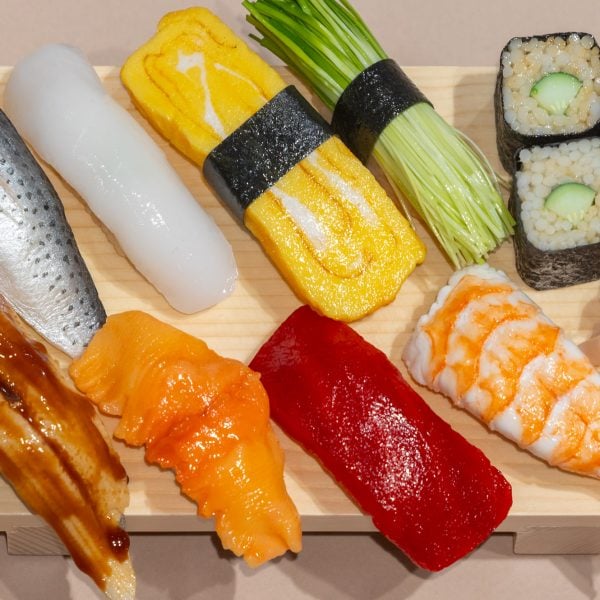Gleaming sushi and an “earthquake-proof burger” are among the hyperrealistic food models on display at Japan House London as part of the exhibition Looks Delicious! Exploring Japan’s Food Replica Culture.
Opening today, the show documents Japan’s history of food replicas, known as food samples or shokuhin sampuru in Japanese, which dates back to 1923 and continues as a contemporary trend.
The bespoke replicas are scale models of dishes from the country’s 1.4 million restaurants, produced by craftspeople for eateries wishing to advertise hyperrealistic versions of their menu items to prospective diners.
Simon Wright, director of programming at Japan House London, explained that the meticulous detailing and bright colours synonymous with the world-famous replicas intend to “stimulate how delicious the food actually is”.
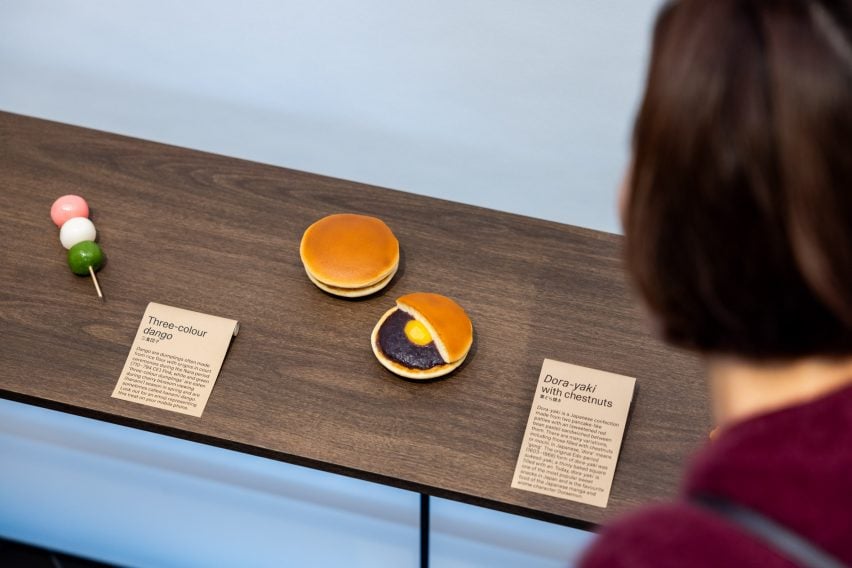
“There’s a slight exaggeration to trigger your memory and stimulate your appetite,” he told Dezeen at the gallery.
Among the works is a dedicated section revealing how the replicas are made, including moulds and stencils such as a screenprint stencil used to create fish scales, arranged in a factory-style layout atop colourful crates.
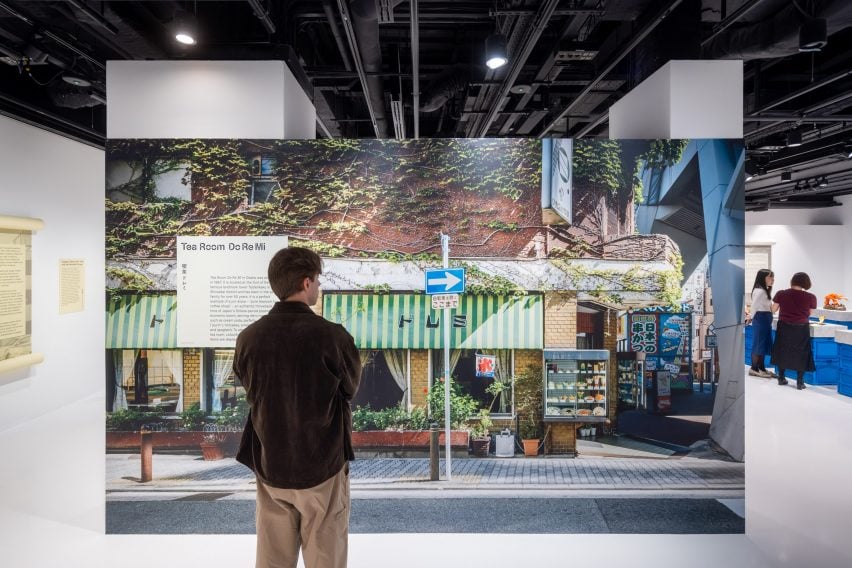
The display examines the shift from early replicas cast from coloured candle wax, which was historically poured into a box of agar jelly, to the polyvinyl chloride (PVC) replicas cast in silicon moulds that emerged in the 1970s and continue to be used today.
“Even though the materials are different, ultimately, it hasn’t really changed,” said Wright.
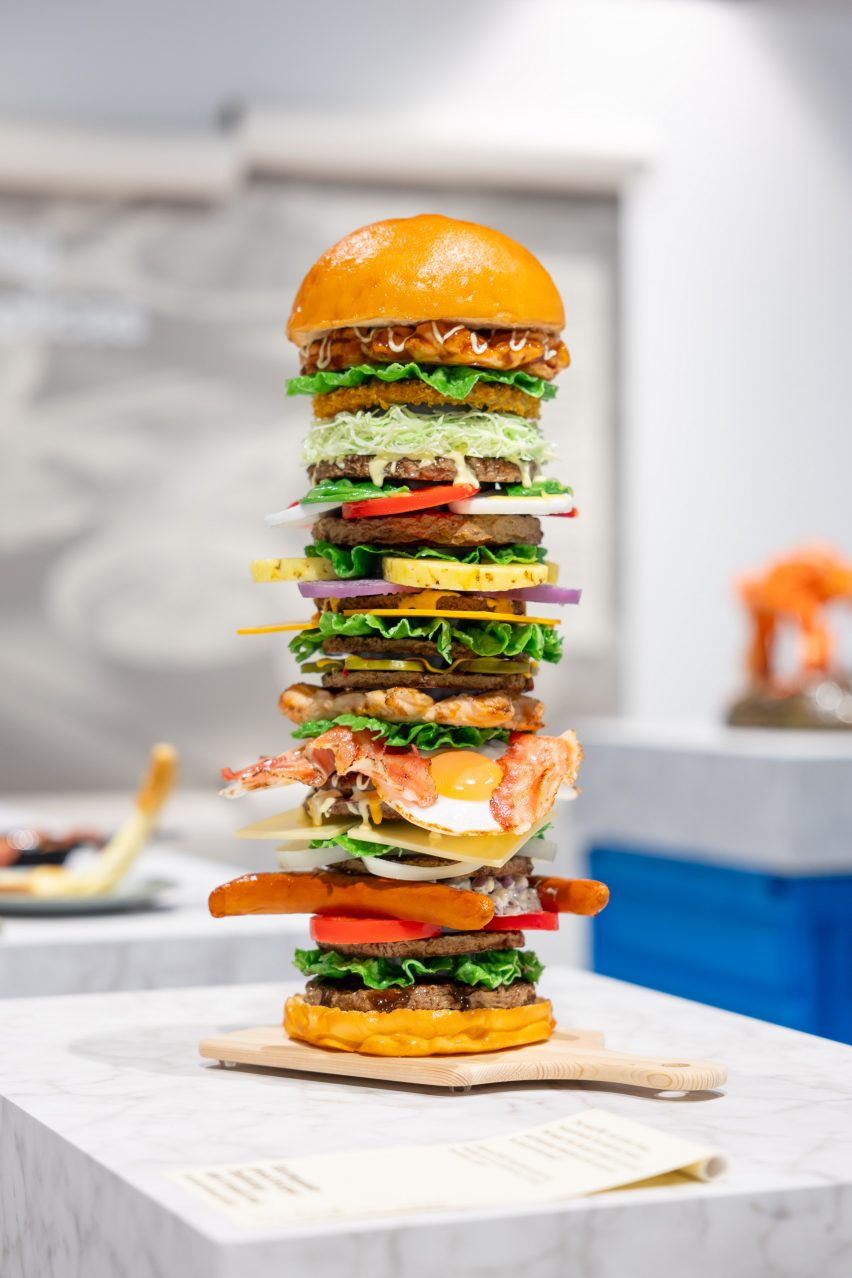
“The process is exactly the same,” he continued, explaining that real food has always been used to create the moulds. “It’s quite analogue. It’s all handcrafted – there are no conveyor belts and automation.”
“That means that there’s a versatility to making food replicas,” he continued. “Any restaurant or food establishment can have what it wants. So maybe your hamburger is just a little bit fatter than the one next door – you can give the craftspeople your fat hamburger, and they will make an exact replica of that.”
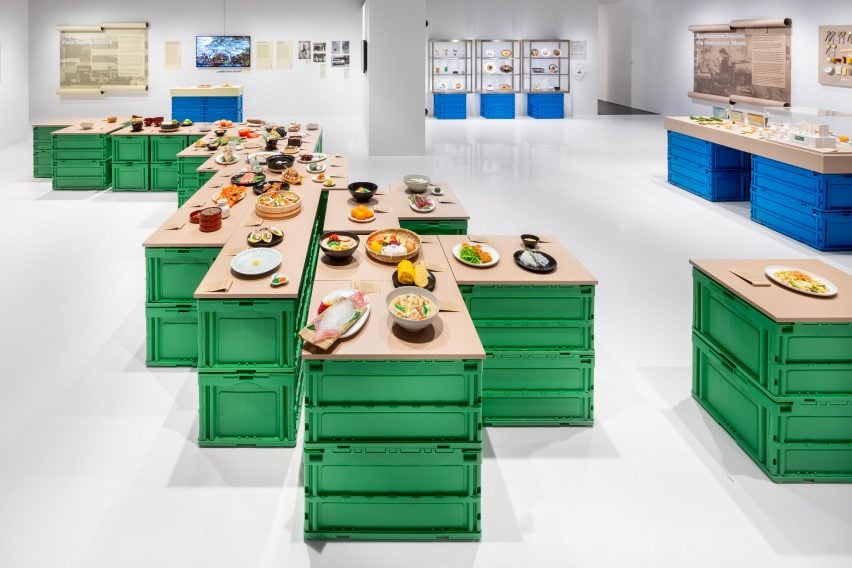
“Colours are also made according to actual food substances,” acknowledged Wright, referring to the selection of paints on display that are used to finish each replica, featuring names including pumpkin peel and croissant.
Another section explores the evolution of food displays, highlighting how the introduction of heat-resistant materials allowed for more dynamic compositions – such as noodles being lifted from a handless fork or cheese oozing from a piece of airborne toast.
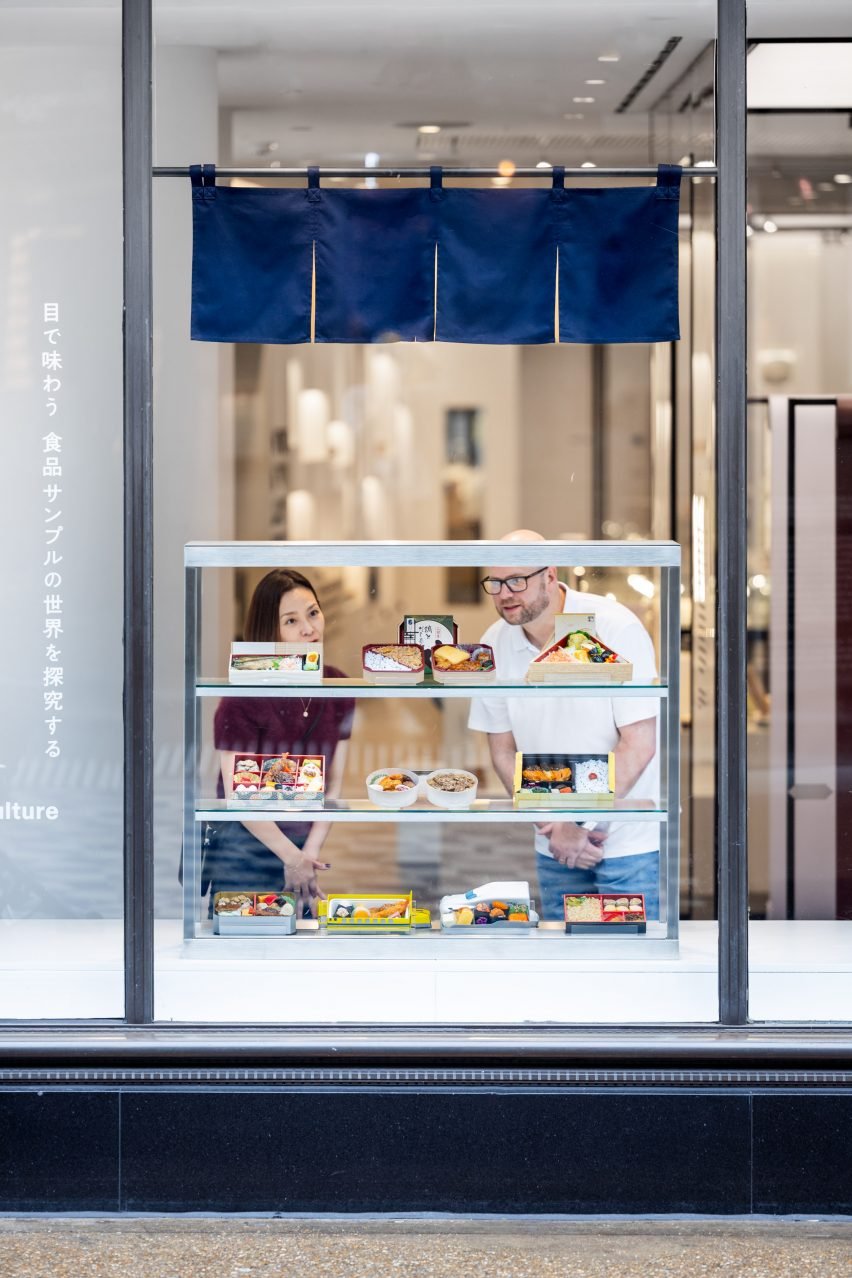
A playful, “earthquake-proof burger” formed from towering piles of artificial meat, relish and onions stands tall on one of the plinths.
“When you display wax, it has to be flat, because it either melts in the heat or fades in the sunlight, which isn’t very effective as a marketing tool,” said Wright.
“When PVC was introduced, you were able to tilt the dish by 45 to 60 degrees, therefore giving more exposure and more visibility to the outside of the model.”
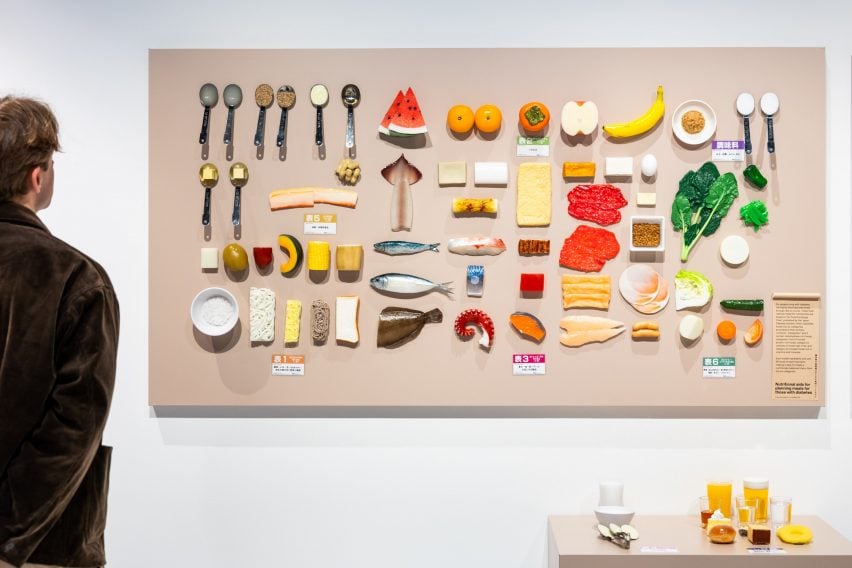
In the centre of the gallery, a banquette-style table presents 47 models commissioned for the exhibition, created by leading food replica manufacturer Iwasaki.
Arranged like a map, each model represents a dish from one of Japan’s 47 prefectures. There is zuwai-gani, shimmering orange snow crab served in the winter in Tottori, and “scattered sushi” from Okayama known as bara-zushi, arranged in a circular timber box.
“We chose them for their variety, size, colour and shape,” said Wright, who explained that they consulted people across Japan when selecting the delicacies.
Elsewhere, the first known food replica created for commercial purposes is on display. Completed in 1931 by Iwasaki Group founder Iwasaki Takizō, the model is a wrinkly yellow omelette topped with a dollop of red sauce and a replica of a dish that Iwasaki’s wife had just prepared in the kitchen at home.
Applications of replicas beyond restaurant settings are also included in the exhibition, highlighting the expanding ways that people are using food models.
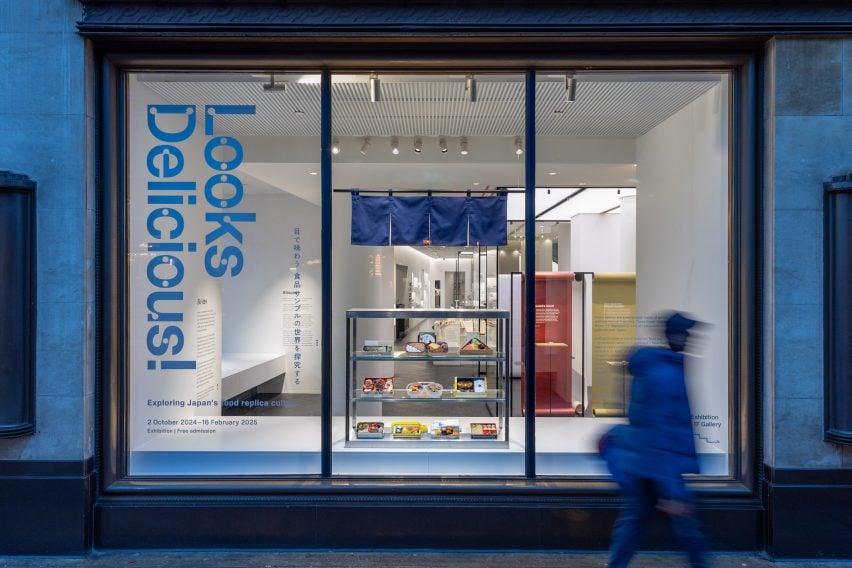
Mounted to one wall is a 3D chart produced for the Japan Diabetes Society classifying food groups according to their primary nutrients, while a “carrot preparation guide” for family caregivers and nursing home staff features a gradient of consistency – from finely cut vegetable rounds to a smooth paste.
Visitors can also create their own bento box of replica food on a dedicated food assembly table covered with a red and white gingham tablecloth.
Wright explained that wax food models were originally created in the early 20th century to introduce Japanese diners to less familiar cuisines imported from China and Europe, before restaurants began to commission replicas of local dishes.
Today, the Looks Delicious! Exploring Japan’s Food Replica Culture is the first UK exhibition of its kind, and offers London audiences the chance to see handcrafted Japanese models up close.
“In Japan, you’ll see exhibitions of competition pieces, but they only exist within a context of what people understand food replicates to be,” said Wright. “Whereas this kind of thing doesn’t really exist, and has never been shown before.”
Elsewhere in London, social enterprise POOR Collective exhibited a collection of work by emerging local designers. Design studio Wax Atelier also presented an exhibition revealing how living trees can provide materials for design objects.
The photography is courtesy of Japan House London.
Looks Delicious! Exploring Japan’s Food Replica Culture takes place from 2 October 2024 to 16 February 2025 at Japan House London, 101-111 Kensington High Street, London W8 5SA.Visit Dezeen Events Guide for a guide to the festival and other architecture and design events taking place around the world.

